On a tour of the labyrinthine alleys inside Crawford Market, retired acting fire chief Pratap Karguppikar identifies for Tanvi Deshpande 5 top slips that make the heritage structure a ticking time bomb
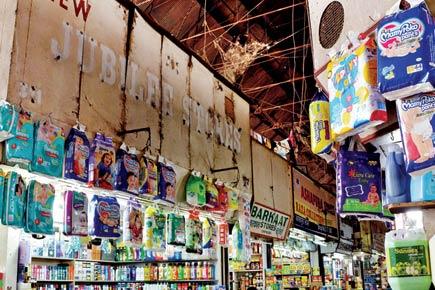
Even as Crawford Market resumed business yesterday, just two days after a fire gutted around 50 shops there, mid-day visited the spot along with former fire chief (acting) Pratap Karguppikar.
Also Read: Fire breaks out at South Mumbai's Crawford Market
ADVERTISEMENT
While much has been said and written about the lack of firefighting equipment in the 133-year-old market, Karguppikar — who had helped control a fire at the same market in 2005 and now runs a private fire safety consultancy — pointed out several other fire hazards there.
Business as usual
Business had resumed at Crawford Market yesterday. “It took a day for the BMC to clear the debris. So from today (Tuesday), we are back in business. Everything is in place and we are hoping for good sales ahead of Diwali,” said Raju Mane, who built a makeshift stall in the same spot where his fruit shop was charred on Sunday.
Traders at Crawford Market sell fruits, dry fruits, vegetables, cosmetics, perfumes, spices, meat and even exotic animals. The market’s restoration is underway and will also include the installation of firefighting equipment, among other things.
Firefighting tools
The ex-acting CFO also questioned whether there were any fire hydrants inside the market. “During the 2005 fire, there were two fire hydrants here. I don’t see them anymore.
What happened to them? Besides, all these big structures should ideally have a 50,000-litre water tank. Does that exist here?” he asked, further highlighting the need for replenishment tanks across the city as well, to top up water supply in case of big fires.
Tight spaces
According to Karguppikar, it wasn’t the structure of the heritage building, but the cramped shops that had compromised the market.
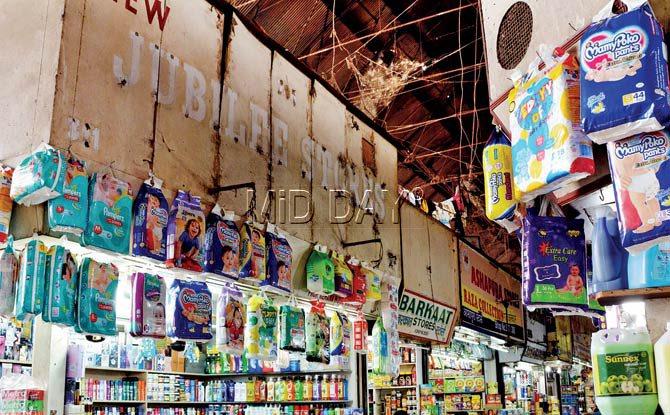
Pics/Sayed Sameer Abedi
“The girders of the building are made of iron and will be fire resistant even at 300 degrees Celsius. Besides, the ceiling is so high that the plume of smoke should dissipate without leading to asphyxiation.
The British had designed the market so that there would be a 2-metre gap between shops. This was to restrict spread of a fire. But look how close these shops are to each other.
Why wouldn’t a fire spread?” he pointed out, adding that many shops also have illegal lofts used for storage. Once the goods on these lofts catch fire, the flames will rise higher, beyond the control of shopkeepers.
Not organised
Karguppikar (in pic) spoke of the need to organise the market’s electrical supply as many vendors had haphazardly used loose wires to connect to a single power source.
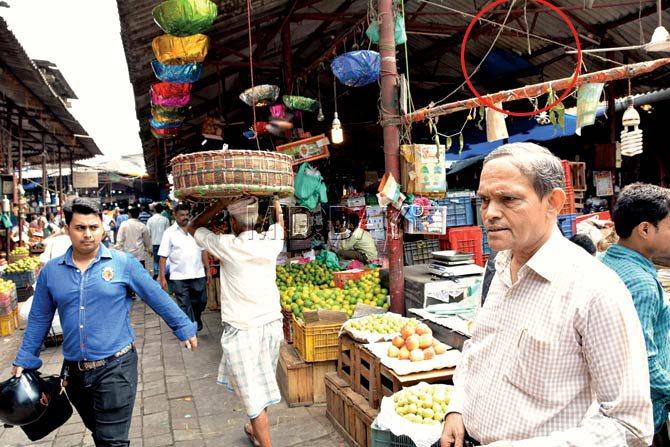
He also pointed out the need to have segregated sections for combustible products and non-combustible goods. “All combustible material such as aerosols should be separated from the non-combustible ones like vegetables. Otherwise, those poor fellows will suffer for no fault of theirs.
If malls can have strict compartmentalization, why not this market? The problem is, nobody cares. This is a public place, and things have been running here this way for years. They might continue to remain like that, if nothing is done,” he added.
Flammable items
“When a fire had broken out in the same market in 2005, hay and tarpaulin were the major combustible materials here. Dried grass, cardboard and wooden cartons had been stored in large quantities, and they caught fire. Ten years since, this hasn’t changed. In fact, now there are more combustibles such as aerosol cans.
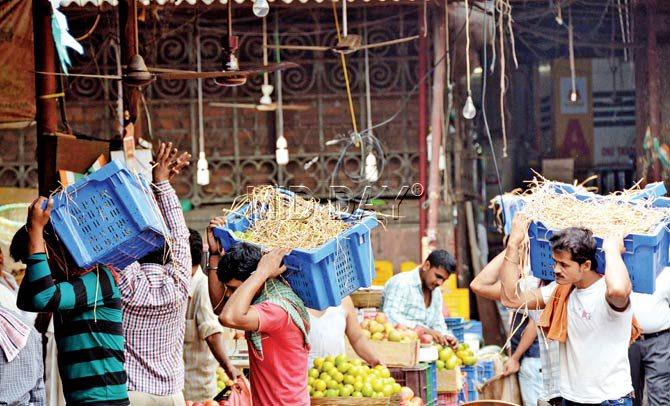
They are like mini LPG cylinders. A large number of thermocol boxes are kept here; in a fire, these will emit carbon monoxide (CO), which generates thick smoke and can lead to asphyxiation. Apart from this, fruit sellers use calcium carbide or ethane to artificially ripen fruits. Both are highly inflammable.”
Blocked passages
The image shows the loading area of the market, where are goods are brought in by handcart and sorted by workers. The pavement on one side of this area is meant to serve as a passage to an exit that opens to the market’s parking area. This crucial escape route, however, is blocked with goods.
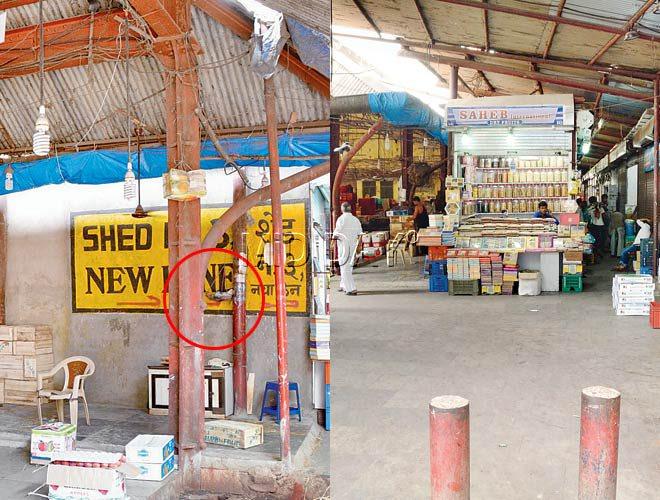
“In case of a fire, people run in every possible direction in panic. If someone stumbles on goods kept like this, it can lead to a stampede.” Restricted passages not only choke escape routes but can also hamper rescue and firefighting efforts.
This dry fruits store sits bang in the middle of a passage running through the market, blocking the path for the fire brigade and their bulky equipment.
Brick vs wood
The heritage building’s skeleton is composed of bricks, which are fire resistant, but this is not the case with the wood and bamboo used by traders to build shops, along with the tarpaulin used to cover it all.
Read Story: No firefighting equipment at 150-year-old Crawford Market

“Even if it saves cost now, in case of a fire, nothing will be left. Bricks, on the other hand, are completely fire resistant,” said Karguppikar.
BMC speak
BMC assistant commissioner (market), Sanjay Kurhade said there is no tank in the market but there are a few fire hydrants, which may be tapped if needed. “We are now concentrating on the restoration and repair of the market. The deadline for this project is 2017,” he said.
 Subscribe today by clicking the link and stay updated with the latest news!" Click here!
Subscribe today by clicking the link and stay updated with the latest news!" Click here!







